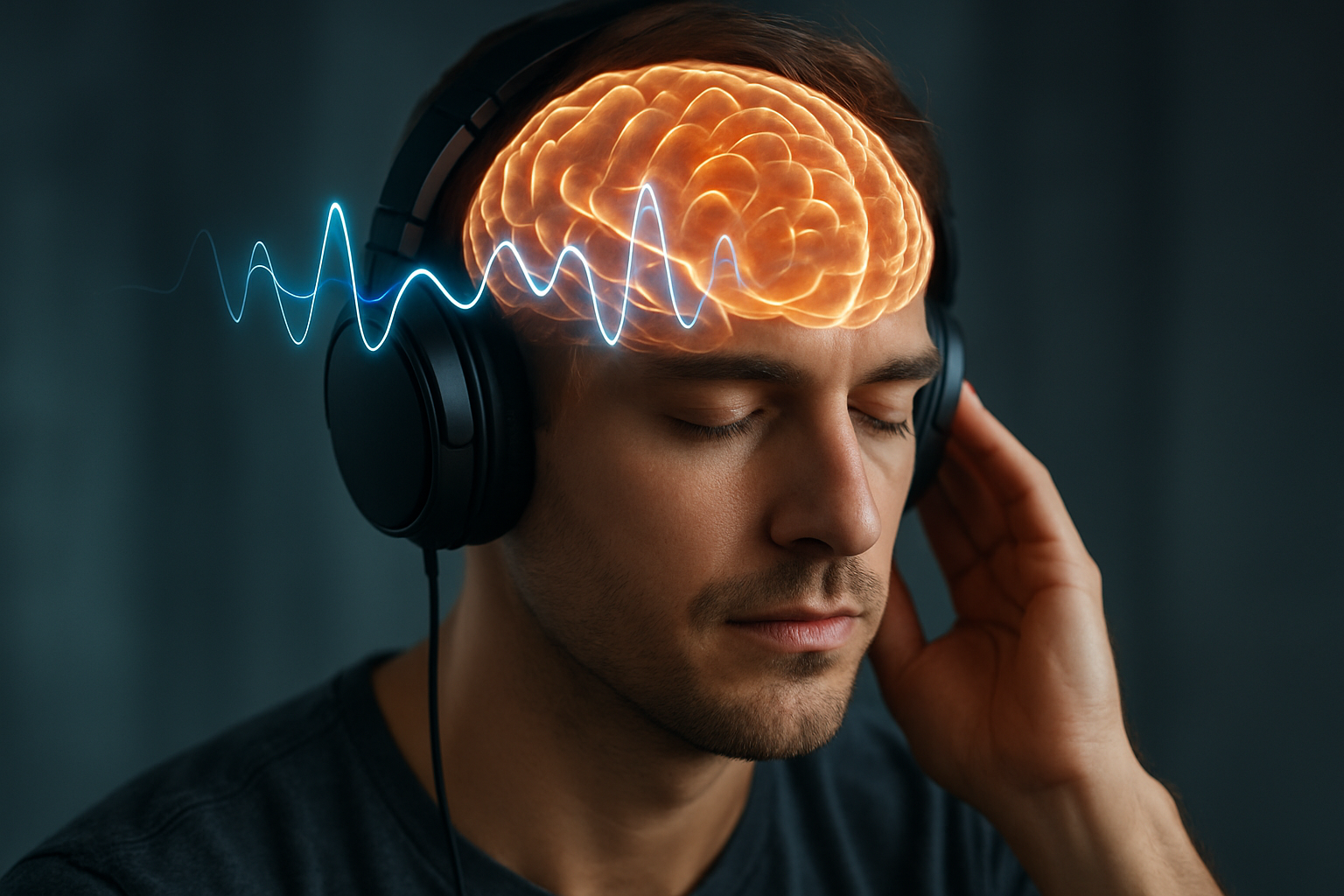Binaural Beats: The Science of Sound-Induced Brain States
Can sound waves influence your brain's activity and enhance your mental state? This intriguing question lies at the heart of a fascinating auditory phenomenon known as binaural beats. As we delve into the science behind this unique form of sound therapy, we'll explore how it might offer a non-invasive approach to improving focus, reducing stress, and potentially boosting cognitive performance.

The Neurological Foundation
The phenomenon of binaural beats was first discovered in 1839 by Heinrich Wilhelm Dove, a Prussian physicist and meteorologist. However, it wasn’t until the late 20th century that researchers began to explore their potential effects on brain function. The theory behind binaural beats is rooted in the concept of brainwave entrainment, which suggests that the brain’s electrical activity can synchronize with external stimuli, particularly rhythmic sensory input.
Brainwaves and Their Significance
Our brains produce electrical activity in the form of brainwaves, which are associated with different states of consciousness. These waves are typically categorized into five main types:
-
Delta waves (0.5-4 Hz): Associated with deep sleep
-
Theta waves (4-8 Hz): Linked to drowsiness and meditation
-
Alpha waves (8-13 Hz): Related to relaxation and light meditation
-
Beta waves (13-30 Hz): Connected to normal waking consciousness and active thinking
-
Gamma waves (30-100 Hz): Associated with peak concentration and cognitive functioning
Proponents of binaural beats suggest that by exposing the brain to specific beat frequencies, it’s possible to induce corresponding brainwave states, potentially leading to desired mental states or cognitive enhancements.
The Potential Benefits of Binaural Beats
Research into the effects of binaural beats has yielded intriguing results, though it’s important to note that the field is still evolving, and more studies are needed to fully understand their impact. Some potential benefits that have been explored include:
-
Enhanced Focus and Concentration: Some studies suggest that exposure to beta frequency binaural beats may improve attention and task performance.
-
Stress Reduction: Alpha frequency binaural beats have been associated with increased relaxation and reduced anxiety in some individuals.
-
Improved Sleep Quality: Delta frequency binaural beats may help promote deeper, more restful sleep.
-
Memory Enhancement: Theta frequency binaural beats have been linked to improved memory formation and recall in certain experiments.
-
Creativity Boost: Exposure to gamma frequency binaural beats has been theorized to enhance creative thinking and problem-solving abilities.
The Current State of Research
While the concept of binaural beats is intriguing, it’s crucial to approach the topic with a critical and scientific mindset. Several studies have shown promising results, but the overall body of research is still limited, and findings can be mixed.
A 2018 review published in the journal Psychological Research examined 22 studies on binaural beats and found that while some studies reported positive effects on memory, attention, anxiety, and pain perception, others showed no significant impact. The researchers concluded that while binaural beats may have potential, more rigorous and well-controlled studies are needed to establish their efficacy conclusively.
Practical Applications and Considerations
For those interested in exploring binaural beats, there are numerous audio tracks and mobile apps available. However, it’s important to keep several factors in mind:
-
Quality Headphones: To experience binaural beats effectively, stereo headphones are essential, as each ear needs to receive a different frequency.
-
Volume and Duration: The optimal volume and listening duration can vary. Generally, a moderate volume and sessions of 15-30 minutes are recommended.
-
Individual Responses: The effects of binaural beats can vary significantly from person to person. What works for one individual may not work for another.
-
Safety Considerations: While generally considered safe for most people, individuals with a history of seizures or other neurological conditions should consult a healthcare professional before using binaural beats.
-
Complementary Approach: Binaural beats should be viewed as a potential complement to, not a replacement for, traditional methods of improving mental well-being and cognitive function.
Fascinating Facts About Sound and the Brain
-
The human ear can distinguish between two sounds that differ in frequency by as little as 0.3%.
-
Our brains can process sound in as little as 0.05 seconds, making it one of our fastest sensory processes.
-
Music has been shown to activate almost all regions of the brain, more than any other stimulus.
-
The brain’s ability to differentiate between sounds decreases with age, starting as early as our 30s.
-
White noise has been found to improve cognitive performance in some individuals with attention difficulties.
In conclusion, binaural beats represent an intriguing intersection of auditory science and neuropsychology. While the full extent of their effects is still being explored, they offer a unique and non-invasive method for potentially influencing brain states. As research in this field continues to evolve, binaural beats may open new avenues for cognitive enhancement and mental well-being. However, it’s crucial to approach this technology with an open yet critical mind, recognizing its potential while also acknowledging the need for further scientific validation.





